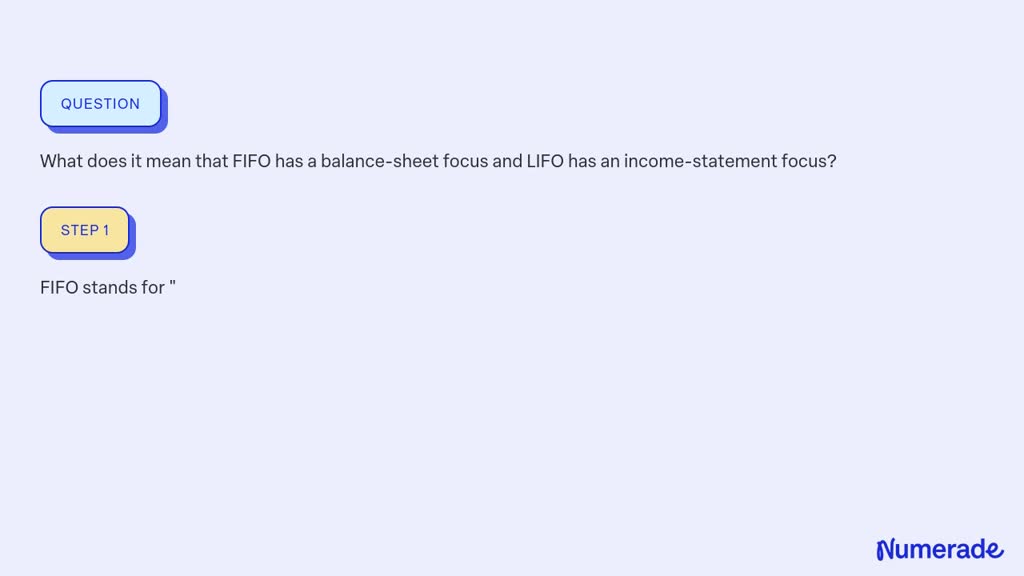
Another reason why businesses would use LIFO is that during periods of inflation, the LIFO method matches higher cost inventory with revenue. When a business uses FIFO, the oldest cost of an item in an inventory will be removed first when one of those items is sold. This oldest cost will then be reported on the income statement as part of the cost of goods sold. If the LIFO reserve decreases during a reporting period, the decrease in the reserve should be added to the cost of the sales amount which is reported on the income statement. The LIFO method requires advanced accounting software and is more difficult to track. You’ll spend less time on inventory accounting, and your financial statements will be easier to produce and understand.
What Is the Impact of FIFO on Financial Statements?
However, FIFO is a much more popular method out of the two because of being more logical for most industries. In addition to tax deferment, LIFO is beneficial in lowering the instances of inventory write-downs. Inventory write-downs happen if the inventory has decreased in price below its carrying value. If LIFO is used, only old inventory will remain in stock, standard deduction and its purchase price will have a lesser chance of going below its carrying value. From an examination of the accounting records, the following data for the first 2 months of the year… The cost of goods sold computations for Sooner company and Later Company are shown as below Instructions Compute inventory turnover and days in inventory for each company.

FIFO vs. LIFO Inventory Valuation
Using FIFO simplifies the accounting process because the oldest items in inventory are assumed to be sold first. When Sterling uses FIFO, all of the $50 units are sold first, followed by the items at $54. With that said, if inventory costs have increased, the COGS for the current period are higher under LIFO. Do you routinely analyze your companies, but don’t look at how they account for their inventory? Therefore, it is important that serious investors understand how to assess the inventory line item when comparing companies across industries or in their own portfolios. The benefits of using the LIFO method are that it helps defer tax and lower inventory write-downs during periods of high inflation.
Get in Touch With a Financial Advisor
In a period of rising prices, FIFO produces the highest gross margin and the highest ending inventory. In this case, the income statement and balance sheet effects of LIFO and FIFO would be the opposite of the rising-price situation. LIFO is not as effective with regard to the replacement cost of a business’s inventory. It is also not appropriate if the business has inventory that easily becomes obsolete or inventory that is perishable. LIFO will always show a lower net income on the firm’s financial statements.
FIFO takes the cost of materials purchased first as the cost of goods sold and the cost of materials purchased last as the items still present in the inventory. LIFO takes the cost of materials purchased most recently as the cost of goods sold and the cost of materials purchased first as the items still present in the inventory. Suppose that a company produces and sells its product in batches of 100 units. If inflation is positive, the cost of production will increase with time. So assume that 1 batch of 100 units is produced within each period, and the cost of production increases after each successive period.
Comparison Between Different Cost Flow Assumptions
- The result is that the reported inventory asset balance has no relation to the cost of goods at current prices.
- The inventory valuation method that you choose affects cost of goods sold, sales, and profits.
- In addition, the benefit of using FIFO is that it results in a higher value of reported earnings and the company’s Net Worth attracting more investors.
While the above is true, in most countries, the IFRS accounting standards are followed, which do not allow the usage of the LIFO method. Instructions Compute the cost of ending inventory and the cost of goods sold using average-cost method. At the beginning of October, Glee had in beginning inventory 2,000 of Unique’s CDs with a unit cost of $7.
FIFO is the preferred accounting method in an environment of rising prices. If the inventory market prices go up, FIFO will give you a lower cost of goods sold because you are recording the cost of your older, cheaper goods first. From a tax perspective, the Internal Revenue Service (IRS) requires that you use the accrual method of accounting if you have inventory.
Albuquerque, and that the total invoice price of the goods in the car was $35,300. Each of these three methodologies relies on a different method of calculating both the inventory of goods and the cost of goods sold. Therefore, considering the older, more expensive inventory was recognized, net income is lower under FIFO for the given period.
In retail, manufacturing and wholesale sales, solid profits result from closely managed inventory. The inventory amount will have to be adjusted by adding the disclosed LIFO reserve to the inventory balance that is reported on the balance sheet. You should also know that Generally Accepted Accounting Principles (GAAP) allow businesses to use FIFO or LIFO methods.